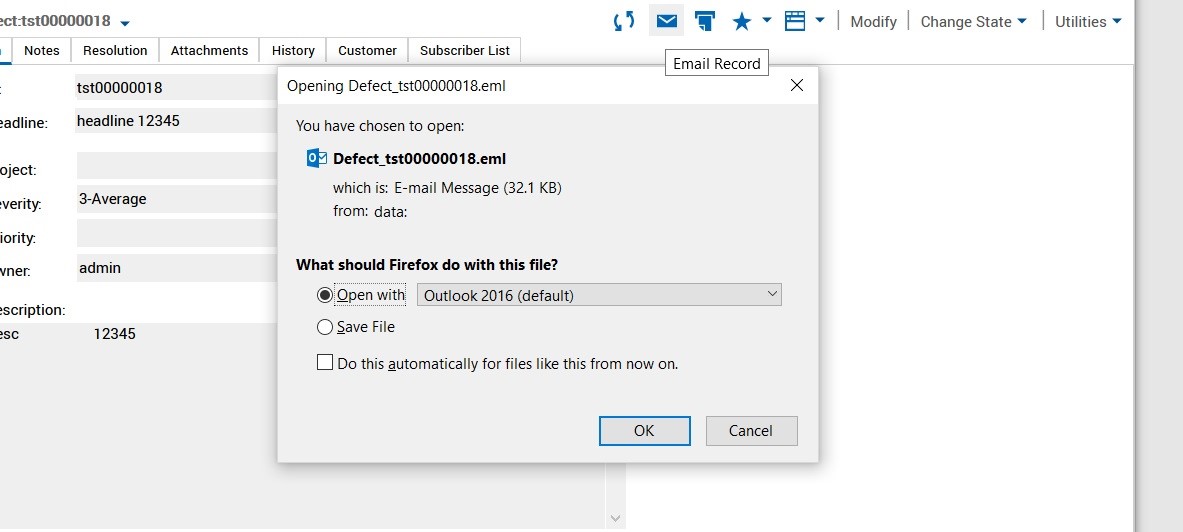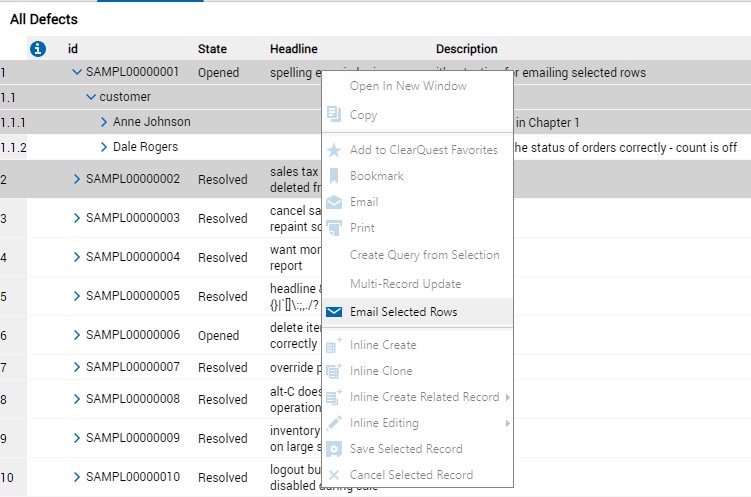Email record and Email selected rows
Provides the capability to send an email for individual records or a result set of rows in the Web client.
About this task
You can use the customized EmailPlus templates to send an email containing the details for a specific displayed record. Within a result set, you can send an email for multiple selected records as well.
The Email record and Email selected rows feature allows the administrator to create email templates and rules so that end users can send emails for records or rows of records as needed. For example, you can send an email containing the defect state, description, and the record link without actually modifying the record as required by traditional EmailPlus rules. You can also send an email containing multiple defects selected in a result set without having to open them individually.
To use only the Email Selected Rows feature, only the fourth step is necessary.
Procedure
Results
After enablement, if you are a member of Allow Email Record and Result Set Groups, you will see an Email Record item in the tool bar of the record form and an Email Selected Rows item on the content menu in the result set.
An example of the Email Record:

An example of the Email Records from result sets:

These features are supported in the Firefox, Chrome, and Edge browsers using an Outlook email client. In Internet Explorer, if clicking the Email Record or Email Selected Rows item, a dialog will display the following “Sending a mail for records is not supported in Internet Explorer. Please use a supported browser.”.
If the email template body is HTML format, when clicking the Email Record item, a file with eml extension will attempt to download via the browser. It can then open as an unsent email in the email client. The download and open behaviors might not be consistent through all the browsers due to different mechanisms of parsing EML file format, which is compliant with RFC-822 Internet Message Format Standard.
If the email template body is plain text format, clicking the Email Record item will result in an unsent email opening in the email client directly.
As with sending individual records, if selecting multiple rows in a result set and clicking Email Selected Rows item, you will be asked to download a file with eml extension. If permitted this will open as an unsent email in the email client. You can also select and send rows containing expanded child records or inline edited rows.